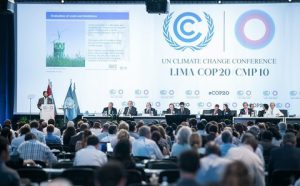Trade between China and Latin America has grown 23% year on year since 2000. By 2016, the Asian giant will become the second largest sub-continental trading partner to the region, surpassing the European Union.
China is already the biggest lender to Latin America, having committed US$ 102bn in loans between 2005 and 2013. In 2010 alone the figure was US$ 37bn, exceeding the total for the same year lent by the World Bank, the Inter-American Development Bank and the Export-Import Bank of the United States combined.
This gives you some idea about how important China is for Latin America and how Latin America is fundamental to the development of Asia’s largest country. During the global economic crisis, which called a dramatic halt to the progress of many developing countries, China offered Latin America a lifeline.
The demand for many resources found in Latin America has encouraged the Chinese to venture into new overseas territories. At the same time, the Chinese government has also encouraged the globalisation of its economy.
China knows that it doesn’t have enough of the resources that will guarantee the subsistence of its 1.3bn people: oil and gas for energy; foodstuffs such as soya and metals and minerals for industry. In turn, Latin America’s developing countries could benefit from greater access to finance and infrastrcture improvements. In China they’ve found their ideal partner. The result has been a wave of mergers between Chinese and Latin American companies, investment in infrastructure including railways, highways and even an interoceanic canal.
Surely this is good news for everyone? Perhaps, but what will be the environmental impact of the construction of the Nicaragua canal that links the Atlantic and the Pacific oceans? How much deforestation will there have to be to make way for the transcontinental highway connecting Brazil and Peru and opening up the Pacific coast? Does the extraction of key resources, such as copper in Chile, follow rules to prevent the pollution of soil, water and air? Is the soya that Argentina exports to China turning it into a monoculture farm? And why would Chinese people care about people and places on the other side of the world?
To facilitate dialogue on topics like these, our new website Diálogo Chino will publish accessible and reliable information in Spanish, Portuguese and English. As the relationship between China and Latin America takes huge strides forward, the social and environmental impacts are increasingly being felt.
In spite of insufficient attention from the media and decision-makers, there is a growing consciousness of the challenges facing the China-Latin America partnership among activists and concerned citizens. By launching dialogochino.net, chinadialogue offers a platform for sharing information so that all parties can better understand this latest chapter in China’s “Go Global” policy.
Check out the Diálogo Chino website and follow the latest updates via twitter (@dialogochino)




